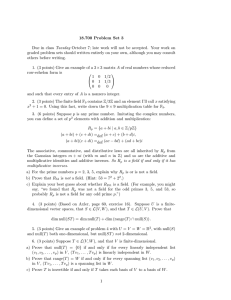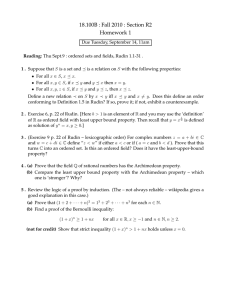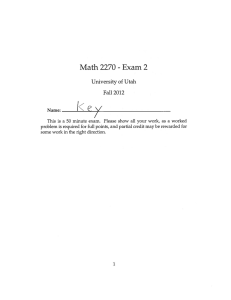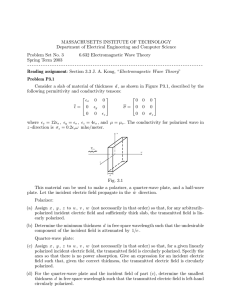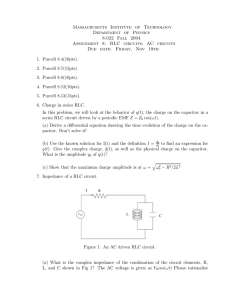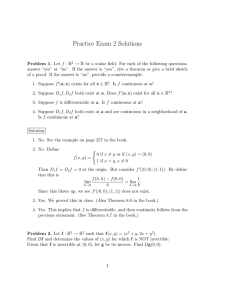18.700 Problem Set 3
advertisement
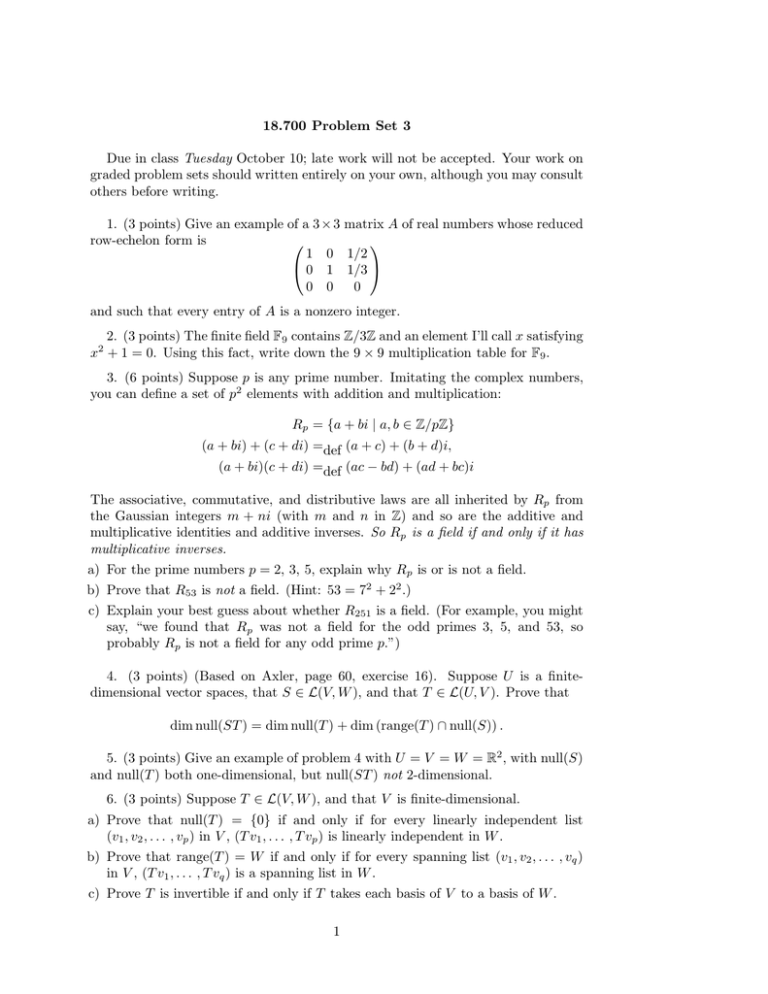
18.700 Problem Set 3
Due in class Tuesday October 10; late work will not be accepted. Your work on
graded problem sets should written entirely on your own, although you may consult
others before writing.
1. (3 points) Give an example of a 3 × 3 matrix A of real numbers whose reduced
row-echelon form is
⎛
⎞
1 0 1/2
⎝ 0 1 1/3 ⎠
0 0
0
and such that every entry of A is a nonzero integer.
2. (3 points) The finite field F9 contains Z/3Z and an element I’ll call x satisfying
x + 1 = 0. Using this fact, write down the 9 × 9 multiplication table for F9 .
2
3. (6 points) Suppose p is any prime number. Imitating the complex numbers,
you can define a set of p2 elements with addition and multiplication:
Rp = {a + bi | a, b ∈ Z/pZ}
(a + bi) + (c + di) =def (a + c) + (b + d)i,
(a + bi)(c + di) =def (ac − bd) + (ad + bc)i
The associative, commutative, and distributive laws are all inherited by Rp from
the Gaussian integers m + ni (with m and n in Z) and so are the additive and
multiplicative identities and additive inverses. So Rp is a field if and only if it has
multiplicative inverses.
a) For the prime numbers p = 2, 3, 5, explain why Rp is or is not a field.
b) Prove that R53 is not a field. (Hint: 53 = 72 + 22 .)
c) Explain your best guess about whether R251 is a field. (For example, you might
say, “we found that Rp was not a field for the odd primes 3, 5, and 53, so
probably Rp is not a field for any odd prime p.”)
4. (3 points) (Based on Axler, page 60, exercise 16). Suppose U is a finitedimensional vector spaces, that S ∈ L(V, W ), and that T ∈ L(U, V ). Prove that
dim null(ST ) = dim null(T ) + dim (range(T ) ∩ null(S)) .
5. (3 points) Give an example of problem 4 with U = V = W = R2 , with null(S)
and null(T ) both one-dimensional, but null(ST ) not 2-dimensional.
6. (3 points) Suppose T ∈ L(V, W ), and that V is finite-dimensional.
a) Prove that null(T ) = {0} if and only if for every linearly independent list
(v1 , v2 , . . . , vp ) in V , (T v1 , . . . , T vp ) is linearly independent in W .
b) Prove that range(T ) = W if and only if for every spanning list (v1 , v2 , . . . , vq )
in V , (T v1 , . . . , T vq ) is a spanning list in W .
c) Prove T is invertible if and only if T takes each basis of V to a basis of W .
1
MIT OpenCourseWare
http://ocw.mit.edu
18.700 Linear Algebra
Fall 2013
For information about citing these materials or our Terms of Use, visit: http://ocw.mit.edu/terms.
